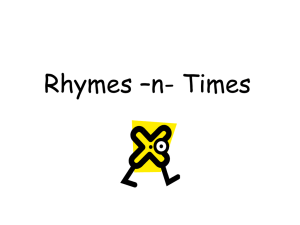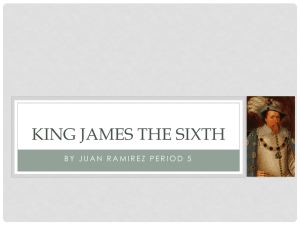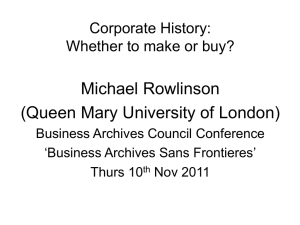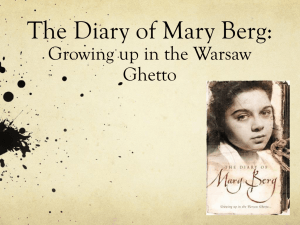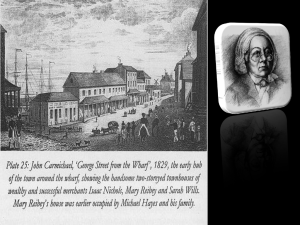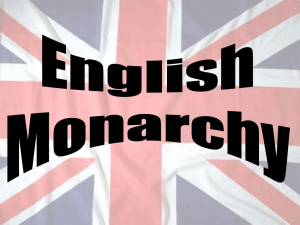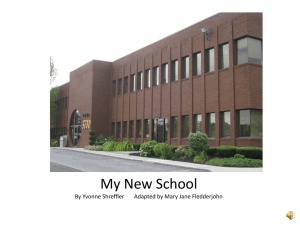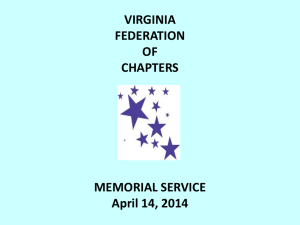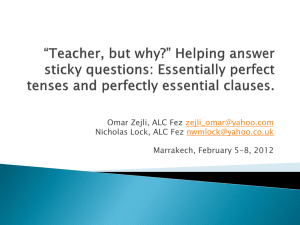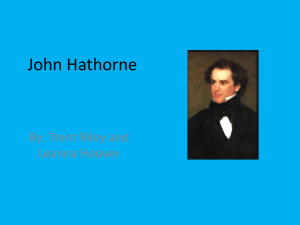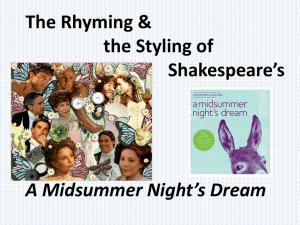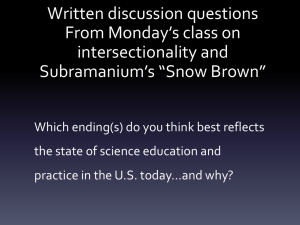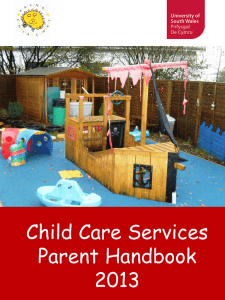HiddenMeaningsNurseryRhymes
advertisement
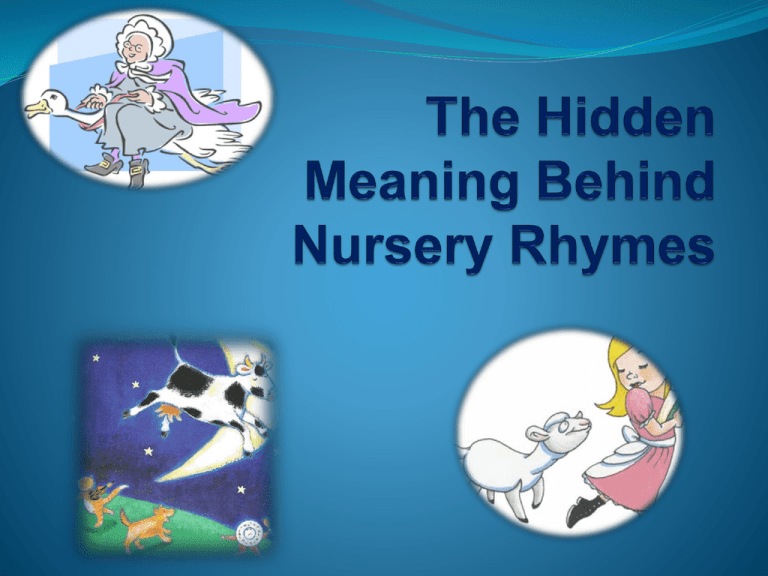
Terrifying, Thoughtful, and Absurd Rhymes for Children In more repressed times, people were not always allowed to express themselves freely, for fear of persecution. Gossiping, criticizing the government or even talking about current events was often punishable by death. In order to communicate at will, clever rhymes were constructed and passed around to parody public figures and events. The first nursery rhymes can be traced back to the fourteenth century. Under the guise of children’s entertainment, many rhymes that were encoded with secret messages throughout history have endured the test of time and are still with us today. Why were rhymes with historical meaning created? • To remember history . . . • Not everyone could read and write. •This was their way to remember history, •Or to teach their children. • The best way to remember is a rhyme. Terrifying, Thoughtful, and Absurd Rhymes for Children Other nursery rhymes don’t seem to carry a particular message at all, but convey a gruesome sense of humor. They have been so ingrained in us since childhood that we hardly notice that babies are falling from trees, women are held captive, or live animals are being cooked. It is only when you stop and absorb the actual words of these catchy, sing-song rhymes that the darkness and absurdity is realized. A handful do not reference historical events at all, but instead seem to convey warnings or common sense wisdom. What are Nursery Rhymes? Most rhyme Some are trivial. Some are poetical. Often some are put to music. Nursery rhymes set to music Hey Diddle Diddle Mary Had a Little Lamb Baa Baa Black Sheep Who are the authors? It is thought that William Shakespeare was the author of Hey Diddle Diddle or at least it was written by someone around that time. No one knows who the authors are of most of the nursery rhymes. Who was Mother Goose? Some believe her to be a witch! Mother Goose a WITCH?!?!?! These are some things that people in the 1600’s associated with a witch. She could fly! She had a goose which is a witch’s familiar. A “familiar” is a pet that can do magical things. She lived alone! With this evidence against her. She must be a …. Witch!!!! Who was Mother Goose? Was she . . . An 8th century noblewoman by the name of Bertranda II Countess of Leon? The wife of Pepin the Short? The mother of Charlemagne? A patroness of children nicknamed Queen Goosefoot? History of Mother Goose Mother Goose began as folk stories told to children. French peasants had created the mythical Mother Goose, who told charming stories to children. The first collection to bear the name “Mother Goose,” was brought out by Charles Perrault (1697). A little history . . . Rhymes were a means used by the locals to gossip about politics in general and the royals in particular. Did You Know? Humpty Dumpty is King Richard III. The farmer’s wife in the Three Blind Mice is Queen Mary I. Baa Baa Black Sheep refers to the tax laws in Britain. Jack Sprat is none other than King Charles I. The old woman who lived in a shoe was the mighty British Empire. Her many children were the umpteen colonies. Do You Find Any Similarities? Humpty Dumpty Humpty Dumpty was a powerful cannon used in the Siege of Colchester during the English Civil War. It was mounted on top of the St Mary’s at the Wall Church in Colchester defending the city against siege in the summer of 1648. Although Colchester was a royalist stronghold, it was besieged by the Roundheads for 11 weeks before finally falling. Humpty Dumpty The church tower was hit by enemy cannon fire and the top of the tower was blown off, sending "Humpty" tumbling to the ground. Naturally all the king’s horses and all the king’s men tried to mend "him" but in vain. Other reports suggest Humpty Dumpty refers to a sniper nicknamed One-Eyed Thompson, who occupied the same church tower. Jack and Jill Jack and Jill went up the hill to fetch a pail of water Jack fell down and broke his crown And Jill came tumbling after. Up got Jack, and home did trot As fast as he could caper He went to bed and bound his head With vinegar and brown paper. Jack and Jill Did you know that this is about the fall of the French Monarchy? Jack was Louis XVI. He was beheaded. Jill was his wife, Marie Antoinette. She was beheaded after her husband. Did You Know? Mary, Mary, quite contrary, How does your garden grow? With silver bells and cockle shells And pretty maids all in a row. This is a protestant condemnation of Mary Queen of Scots. Protestants could not speak openly against the Queen without retribution so they spoke in more or less a code of wit. Mary, Mary . . . Mary, Mary, quite contrary, Mary is a disagreeable Catholic tyrant. How does your garden grow? The garden referred to is filled with the graves of protestant martyrs/opponents of the Queen and the growing number of such victims under her oppressive rule. With silver bells and cockle shells Instruments of torture such as thumbscrews and iron masks And pretty maids all in a row. Instruments like the guillotine known as “maids” to behead enemies Little Jack Horner Little Jack Horner sat in the corner Eating his Christmas pie, He put in his thumb and pulled out a plum And said "What a good boy am I!" Little Jack Horner The history of this rhyme dates back to the 16th century. Richard Whiting was the last abbot of Glastonbury during the dissolution of the monasteries by King Henry VIII of England. Prior to the destruction of Whiting’s monastery, he sent a steward named “Horner” with a large pie to bribe the king. Little Jack Horner Bishop Whiting hid deeds to twelve large manors in a pie. The manor properties included lead mines, hence “He pulled out a plum” – from Latin plumbum, for lead. During Horner’s journey to the king, it is believed that he took the deed to the largest property called the Manor of Mells, which was the “plum” of all the deeds. He delivered the pie to the king with only eleven deeds. Little Jack Horner The old Bishop was convicted of treason for remaining loyal to Rome. The jury included his treacherous steward Horner who found Bishop Whiting guilty and sent the old man to a terrible death of being hung, drawn and quartered, and the Abbey was destroyed. Ring around the Rosie Ring around the rosy A pocketful of posies "Ashes, Ashes" We all fall down! Ring around the Rosie •Linked to the Bubonic Plague • A “ring of rose” colored rings appeared on the skin. • People kept posies with them because they thought the plague was spread by bad smells. • “Ashes, Ashes, We all fall down” is from burning the bodies after the people died. Pop Goes the Weasel Half a pound of tuppenny rice, Half a pound of treacle, That’s the way the money goes, Pop! goes the weasel. Up and down the city road, In and out the Eagle, That’s the way the money goes, Pop! goes the weasel. Pop goes the weasel means that people traded in their coats for money. The word “pop” means to pawn and the word “weasel” comes from “weasel and stoat” which means a coat. Even the poor people owned a suit that they wore as their “Sunday Best.” Pop Goes the Weasel When the people had a lack of income, they would pawn their suit, or coat, on Monday and then buy it back before Sunday so they could wear it to church. “In and out of the Eagle” referred to going in and out of a pub. The Eagle Tavern was a pub in London. Baa, Baa Black Sheep Baa, baa black sheep Have you any wool? Yes sir, yes sir, Three bags full. One for the master, One for the dame, One for the little boy Who cries down the lane This nursery rhyme is over 200 years old. It is seen as a criticism of the oppressed common people, the “little boy who lives down the lane,” • against the King, “my master,” who took their wool and • against the oppressively wealthy nobility, “my Dame.” Baa Baa Black Sheep In medieval England, the wool trade was big business. Everyone who had land raised sheep. After returning from the crusades in 1272, Edward I imposed new taxes on the wool trade in order to pay for his military ventures. This wool tax forms the background to the rhyme. Three Blind Mice This rhyme was published around the time of Queen Mary I, the daughter of Henry VIII in England. Queen Mary I was a very devout Catholic. She was known for holding large estates with her husband King Philip of Spain. Three Blind Mice Queen Mary I was also known for her violent punishment of Protestants which earned her the nickname “Bloody Mary.” The rhyme is indicative of one of those times when she persecuted Protestants. Three blind mice refers to three Protestant loyalists that were burned at the stake by Queen Mary I. She never actually “cut” or blinded the Protestant loyalists, but she did burn them at the stake for plotting against her. Georgie Porgie This rhyme’s historical period was around 1592-1628. It refers to the courier George Villiers, the first Duke of Buckingham. King James I took Villiers as his favorite and possibly his lover. Villiers also had good looks that appealed to the ladies. He seemed to have had an amoral affair with the Queen of France. Georgie Porgie Villier’s dubious moral character was much in question. This, however, was overlooked due to his friendship with King Charles II until the parliament stopped the King intervening on his behalf. At this point, all of the jealous husbands vowed to wreak their revenge causing Georgie Porgie to “run away.” London Bridge Is Broken Down The origins of this nursery rhyme have roots in the extraordinary events surrounding King Henry VIII of England (1491-1547) and his second, tragic, wife Anne Boleyn. The “Lady Lee” is Lady Margaret Wyatt, the sister of Thomas Wyatt, the poet. She married Sir Anthony Lee of Quarrendon and thus became Lady Lee. The Wyatts were neighbors of the Boleyn family and Anne and Margaret were childhood friends. London Bridge Is Broken Down As Anne Boleyn rose in power, Margaret accompanied her and became a trusted lady-inwaiting. When Anne was accused of bigamy, Thomas Wyatt was accused with her, but he was later released. Margaret (Lady Lee) stayed with Anne Boleyn until her execution and attended the ill-fated queen on the scaffold. The words of the rhyme are believed to describe the rise and fall of Anne Boleyn (the gay ladye). London Bridge Is Broken Down Anne Boleyn was hated by the common people of England due to her haughty manner and the common folk’s strong allegiance to Henry VIII’s first wife, Katherine of Aragon. Open criticism of Anne was approved and encouraged during the reigns of Henry VIII and his eldest daughter Mary (Bloody Mary – Henry and Katherine’s daughter). But when Queen Elizabeth I ascended to the throne, all such approval and criticism stopped; the new Queen was the daughter of Henry VIII and Anne Boleyn. Not all nursery rhymes have historical meanings. Some are used to teach. Mary had a little lamb… Mary had a little lamb its fleece was white as snow; And everywhere that Mary went, the lamb was sure to go. It followed her to school one day, which was against the rule; It made the children laugh and play, to see a lamb at school. And so the teacher turned it out, but still it lingered near, And waited patiently about till Mary did appear. "Why does the lamb love Mary so?" the eager children cry; "Why, Mary loves the lamb, you know" the teacher did reply. Mary had a little lamb… Written by Sarah Hale living in Boston in 1830. This rhyme shows that love is given and received. It also introduces children to similes. Hickory Dickory Dock Hickory dickory dock The mouse ran up the clock The clock struck one The mouse ran down Hickory dickory dock Hickory Dickory Dock • This rhyme is a good way to teach children to tell time. • It was also fun for the word play. One, Two, Buckle My Shoe! One two buckle my shoe Three, four, knock at the door Five, six, pick up sticks Seven, eight, lay them straight Nine, ten, a big fat hen Eleven, twelve, dig and delve Thirteen, fourteen, maids acourting Fifteen, sixteen, maids in the kitchen Seventeen, eighteen, maids in waiting Nineteen, twenty, my plate's empty One, Two, Buckle My Shoe! •Used to help children count •Made it fun to learn •Easy to remember Some nursery rhymes are just fun… But most are to help teach, remember history, or even to make fun of royalty. The Hidden Meaning Behind Nursery Rhymes
